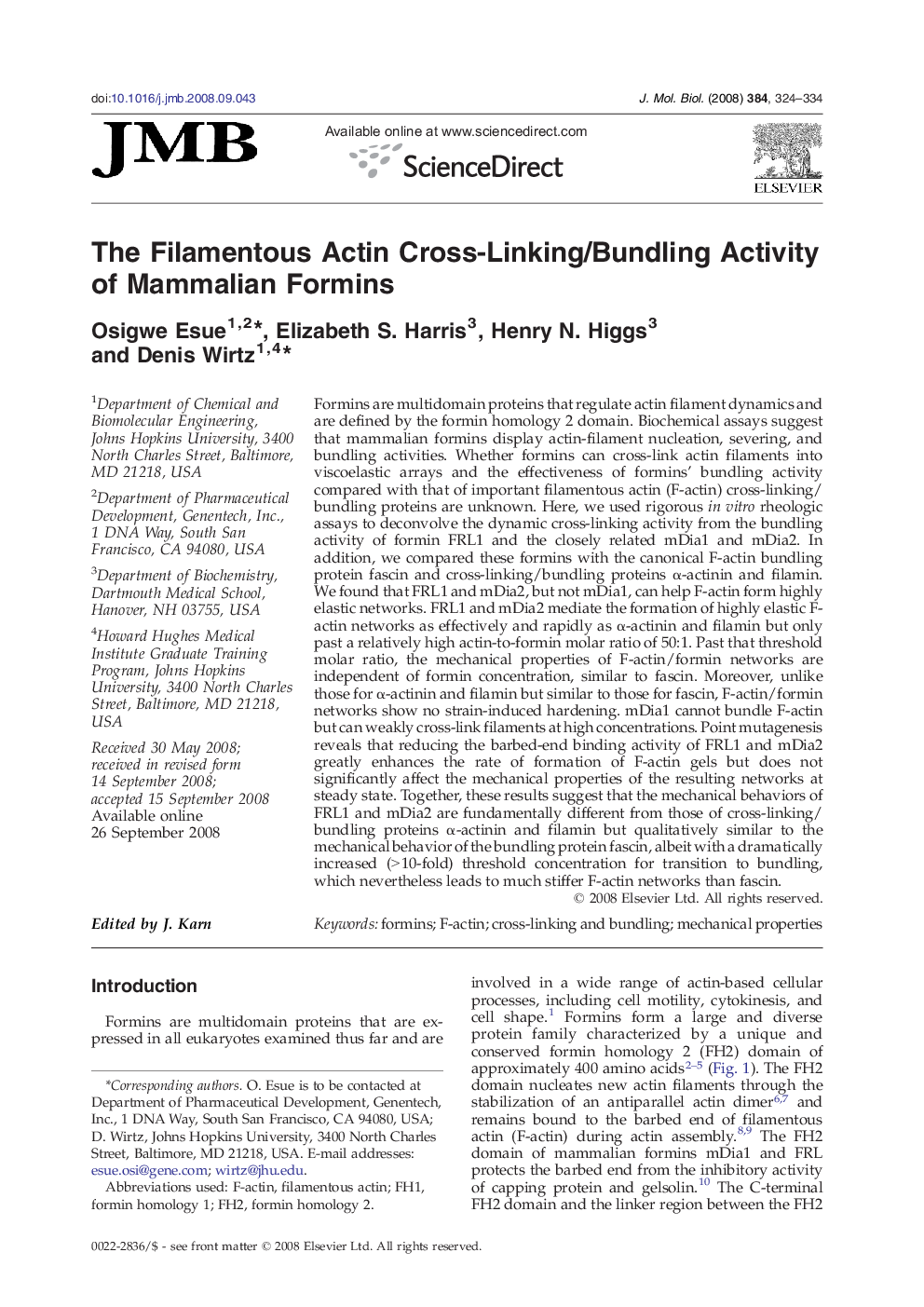| کد مقاله | کد نشریه | سال انتشار | مقاله انگلیسی | نسخه تمام متن |
|---|---|---|---|---|
| 2186974 | 1096090 | 2008 | 11 صفحه PDF | دانلود رایگان |

SummaryFormins are multidomain proteins that regulate actin filament dynamics and are defined by the formin homology 2 domain. Biochemical assays suggest that mammalian formins display actin-filament nucleation, severing, and bundling activities. Whether formins can cross-link actin filaments into viscoelastic arrays and the effectiveness of formins' bundling activity compared with that of important filamentous actin (F-actin) cross-linking/bundling proteins are unknown. Here, we used rigorous in vitro rheologic assays to deconvolve the dynamic cross-linking activity from the bundling activity of formin FRL1 and the closely related mDia1 and mDia2. In addition, we compared these formins with the canonical F-actin bundling protein fascin and cross-linking/bundling proteins α-actinin and filamin. We found that FRL1 and mDia2, but not mDia1, can help F-actin form highly elastic networks. FRL1 and mDia2 mediate the formation of highly elastic F-actin networks as effectively and rapidly as α-actinin and filamin but only past a relatively high actin-to-formin molar ratio of 50:1. Past that threshold molar ratio, the mechanical properties of F-actin/formin networks are independent of formin concentration, similar to fascin. Moreover, unlike those for α-actinin and filamin but similar to those for fascin, F-actin/formin networks show no strain-induced hardening. mDia1 cannot bundle F-actin but can weakly cross-link filaments at high concentrations. Point mutagenesis reveals that reducing the barbed-end binding activity of FRL1 and mDia2 greatly enhances the rate of formation of F-actin gels but does not significantly affect the mechanical properties of the resulting networks at steady state. Together, these results suggest that the mechanical behaviors of FRL1 and mDia2 are fundamentally different from those of cross-linking/bundling proteins α-actinin and filamin but qualitatively similar to the mechanical behavior of the bundling protein fascin, albeit with a dramatically increased (> 10-fold) threshold concentration for transition to bundling, which nevertheless leads to much stiffer F-actin networks than fascin.
Journal: Journal of Molecular Biology - Volume 384, Issue 2, 12 December 2008, Pages 324–334